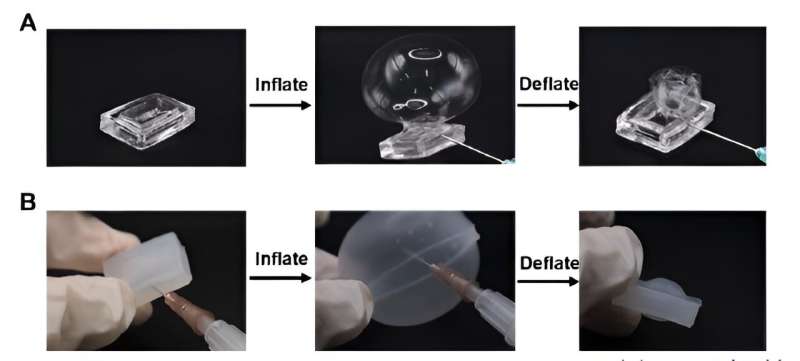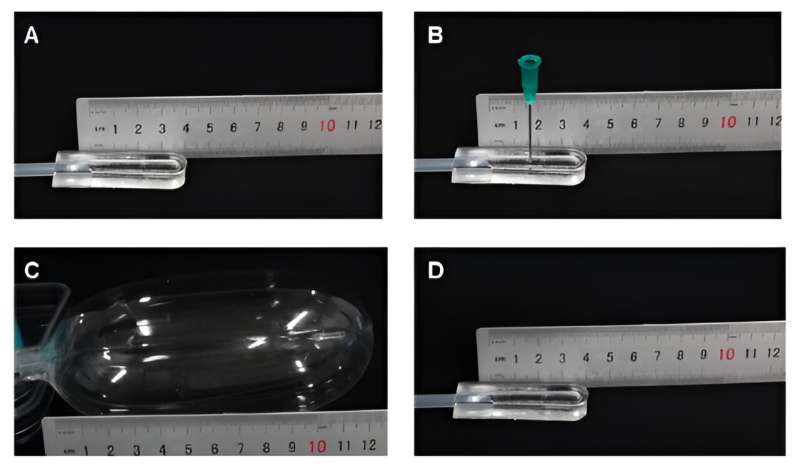March 29, 2024 report
This article has been reviewed according to Science X's editorial process and policies. Editors have highlighted the following attributes while ensuring the content's credibility:
fact-checked
peer-reviewed publication
trusted source
proofread
New hydrogel can stretch to 15 times its original size

A team of molecular engineers at Tsinghua University, in China, has developed a new type of hydrogel that can stretch to 15 times its original size and then snap back to its original form. In their study, published in the journal Science, the group modified the process normally used to create hydrogels to produce a new one that is far more elastic.
Hydrogels are known for their stretchiness—they can be pulled like taffy or a rubber band. But most do not snap back to their original form very well, making them stretchy but not elastic. Additionally, they can only be stretched in one direction.
Currently, hydrogels are generally made by creating compounds with cross-linked polymers linked by water molecules. In this new effort, the team in China sought to improve the characteristics of a hydrogel by making changes to the fabrication method.
To create their new hydrogel, the research team modified the standard approach by adding what they describe as "pearl necklace chains"—polymer chains formed in the shape of coils and connected together using carbon atoms. Such chains, they found, could unfurl when pulled and rewind when released. To create the chains, the team removed the water from a traditional hydrogel, forcing the existing chains to attach to themselves, and then restored the water.
The researchers found that they could stretch a 30-cm sample up to five meters. When they released it, the sample shrank back to its original size and shape in only a few seconds. They suggest samples made in disk shapes could be pulled in all directions until the original sample is 100 times bigger than its original form, and then return to its original form when released.

To test the hydrogel's use in general applications, they built robot grippers and used them to gently handle fragile objects in their lab. They found their robot could pick up strawberries, as one example, without causing bruising or any sort of damage. They suggest their new hydrogel will find many uses in commercial applications.
More information: Lili Chen et al, A hyperelastic hydrogel with an ultralarge reversible biaxial strain, Science (2024). DOI: 10.1126/science.adh3632
Journal information: Science
© 2024 Science X Network





















